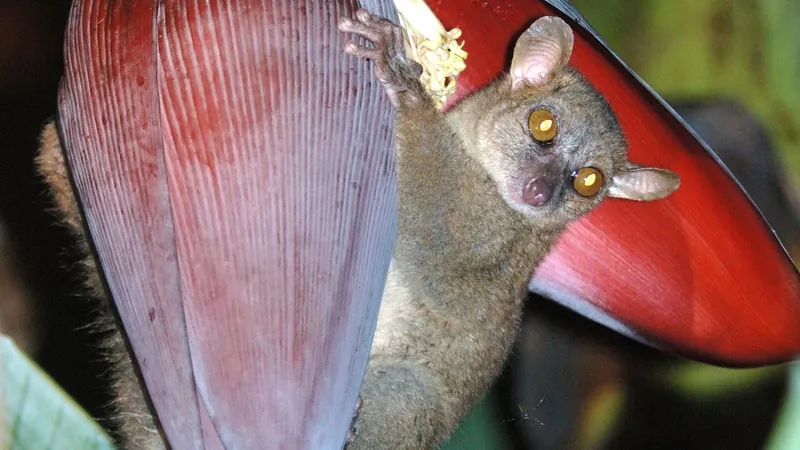
Discover the Enigmatic Northern Giant Mouse Lemur: The Adorable Primates with Surprisingly Large Testicles!
2025-04-05
Author: Daniel
Where it Lives:
Northern Madagascar, mainly in the lush forests of the Ampasindava peninsula.
Diet:
Fruits, flowers, nectar, tree sap, and small insects are all part of this tiny primate's diet.
Why This Species is Fascinating:
Despite their small stature—usually weighing only around 10 ounces (300 grams)—the Northern giant mouse lemur (Mirza zaza) has captured the attention of scientists and nature lovers alike with its astonishing physical characteristic: an impressive testicles-to-body size ratio, which is the highest among all known primates. Their testicles can account for approximately 5% of their body weight!
These nocturnal creatures, measuring about 10 inches (25 centimeters) long without their tails, boast unusually large, reflective eyes that grant them the ability to navigate through their dimly-lit forest habitats effortlessly. Their long, fluffy tails function as balancing aids, allowing them to leap and swing gracefully from branch to branch, while their large, thin ears enhance their hearing—critical for staying alert to potential predators.
The remarkable size of their testicles is not just for show; it’s linked to their intriguing mating systems. Engaging in a polygynandrous approach, Northern giant mouse lemurs have multiple mating partners, which spurs intense competition among males to fertilize females. Consequently, they have evolved larger testes to produce more sperm, increasing their chances of reproduction.
Interestingly, unlike many lemur species that may only mate during specific seasons, Northern giant mouse lemurs enjoy the luxury of year-round reproduction. This is likely due to the continuous availability of nutrient-rich food sources, allowing them to maintain their impressive testicle size consistently throughout the year.
When the females are in the mood to mate, they emit calls to attract males, signaling their readiness. After a gestational period of around three months, females typically give birth to one offspring at a time. However, since they are capable of mating all year, they can sometimes have two or even three infants in a single year. Solely responsible for nurturing the young, mothers ensure that their offspring reach maturity in roughly one year.
Why It Matters:
The discovery of the Northern giant mouse lemur in 2005 only highlights the importance of preserving Madagascar’s unique ecosystems. As one of the world's most biologically diverse regions, understanding and protecting such extraordinary species is critical for maintaining biodiversity. Could the remarkable traits of these small lemurs hold secrets to understanding other evolutionary processes in nature? Only time will tell!
Once deemed just another fascinating animal, the Northern giant mouse lemur continues to astonish researchers with their peculiar adaptations—becoming an emblem of the extraordinary wonders of the animal kingdom!





 Brasil (PT)
Brasil (PT)
 Canada (EN)
Canada (EN)
 Chile (ES)
Chile (ES)
 Česko (CS)
Česko (CS)
 대한민국 (KO)
대한민국 (KO)
 España (ES)
España (ES)
 France (FR)
France (FR)
 Hong Kong (EN)
Hong Kong (EN)
 Italia (IT)
Italia (IT)
 日本 (JA)
日本 (JA)
 Magyarország (HU)
Magyarország (HU)
 Norge (NO)
Norge (NO)
 Polska (PL)
Polska (PL)
 Schweiz (DE)
Schweiz (DE)
 Singapore (EN)
Singapore (EN)
 Sverige (SV)
Sverige (SV)
 Suomi (FI)
Suomi (FI)
 Türkiye (TR)
Türkiye (TR)
 الإمارات العربية المتحدة (AR)
الإمارات العربية المتحدة (AR)